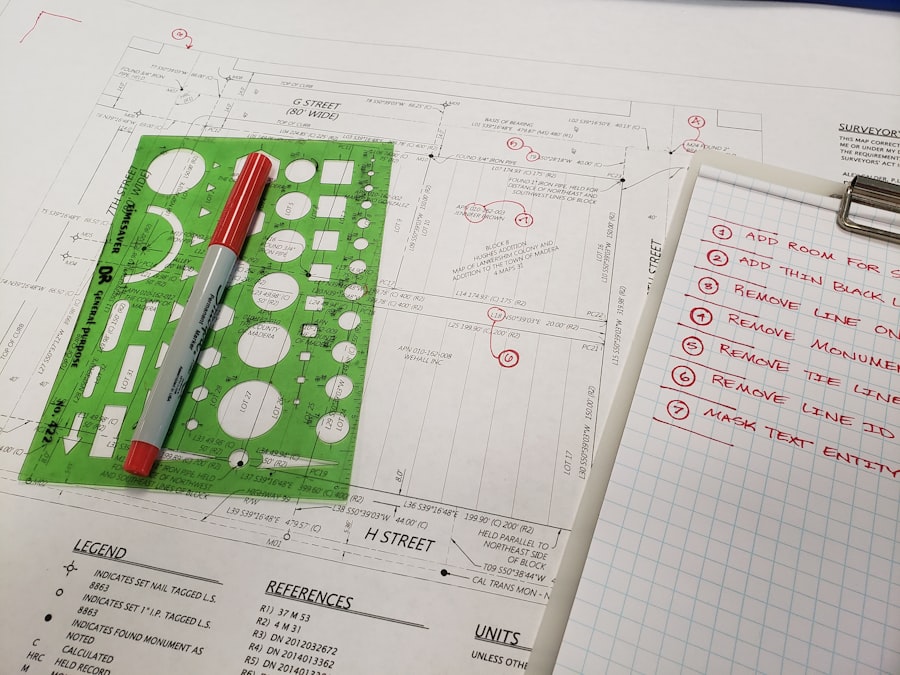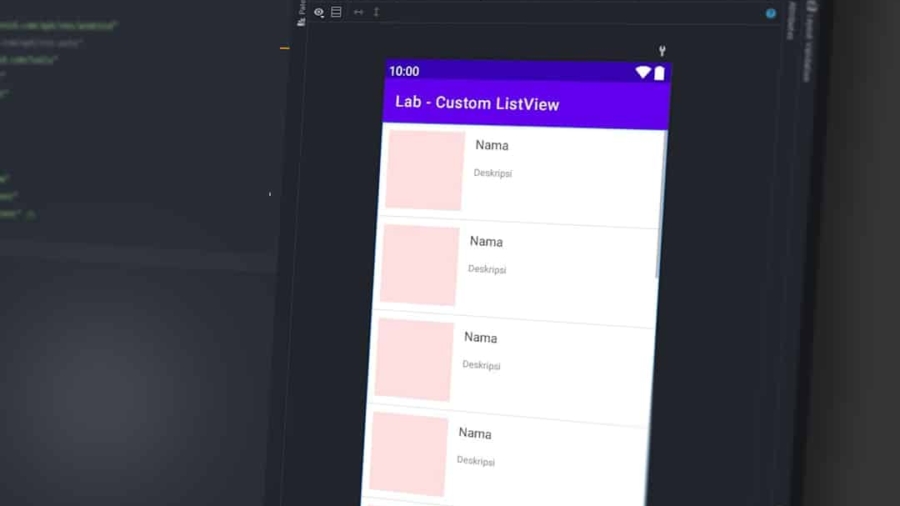The advent of artificial intelligence (AI) has revolutionized numerous sectors, and software development is no exception. AI-generated software prototypes represent a significant leap forward in how applications are conceptualized, designed, and developed. Traditionally, the process of creating software prototypes involved extensive human input, requiring skilled developers to translate ideas into functional models.
However, with the integration of AI technologies, this paradigm is shifting. AI systems can now analyze vast amounts of data, recognize patterns, and generate prototypes that meet specified requirements with remarkable efficiency.
These technologies enable AI to understand user needs and preferences, allowing it to create prototypes that are not only functional but also user-friendly. As organizations strive for agility and rapid iteration in their development processes, AI-generated prototypes offer a compelling solution that can significantly reduce time-to-market while enhancing the quality of the final product.
Key Takeaways
- AI-generated software prototypes are created using artificial intelligence and machine learning algorithms to quickly develop and test software applications.
- Advantages of AI-generated software prototypes include faster development, reduced costs, and the ability to explore a wide range of design options.
- Challenges and limitations of AI-generated software prototypes include the need for high-quality training data, potential biases in the generated prototypes, and the inability to replace human creativity and intuition.
- The impact of AI-generated software prototypes on software development is significant, as they can streamline the development process, improve time-to-market, and enhance overall product quality.
- Ethical considerations in AI-generated software prototypes revolve around issues such as data privacy, security, and the potential displacement of human workers in the software development process.
Advantages of AI-Generated Software Prototypes
Accelerating the Development Cycle
Traditional prototyping methods can be time-consuming, often requiring weeks or even months to produce a viable model. In contrast, AI-generated software prototypes can significantly accelerate the development cycle by leveraging pre-existing data and algorithms that streamline the design process. This enables developers to generate prototypes in a fraction of the time, allowing for faster iteration and refinement.
Enhancing Creativity in Software Design
AI-generated prototypes can also enhance creativity in software design. By analyzing existing applications and user interactions, AI can suggest innovative features and functionalities that human designers might overlook. This infusion of creativity not only enriches the design process but also helps in crafting solutions that are more aligned with user expectations.
Unleashing New Ideas and Solutions
For instance, an AI system trained on a vast dataset of mobile applications could propose unique user interface elements or suggest new ways to enhance user engagement based on successful patterns observed in other apps. This capability allows developers to iterate quickly based on user feedback, ultimately leading to a more refined final product.
Challenges and Limitations of AI-Generated Software Prototypes

Despite the numerous advantages, the use of AI in generating software prototypes is not without its challenges. One significant limitation is the reliance on quality data. AI systems learn from historical data; if this data is biased or incomplete, the generated prototypes may reflect those shortcomings.
For example, if an AI model is trained predominantly on applications from a specific demographic or geographic region, it may produce prototypes that do not cater effectively to a broader audience. This limitation underscores the importance of curating diverse datasets to ensure that AI-generated outputs are inclusive and representative. Another challenge lies in the interpretability of AI-generated designs.
While AI can produce functional prototypes, understanding the rationale behind certain design choices can be difficult for human developers.
The complexity of AI algorithms often means that even experienced developers may struggle to grasp how certain decisions were made, potentially hindering collaboration and trust in the technology.
Impact of AI-Generated Software Prototypes on Software Development
The integration of AI-generated software prototypes is reshaping the landscape of software development in profound ways. One notable impact is the democratization of software creation. With tools that allow non-technical users to generate prototypes through simple interfaces or natural language commands, individuals without extensive programming knowledge can participate in the development process.
This shift not only broadens the pool of contributors but also fosters innovation by allowing diverse perspectives to influence software design. Additionally, AI-generated prototypes facilitate a more iterative approach to development. Agile methodologies emphasize continuous feedback and adaptation, and AI tools align perfectly with this philosophy.
By enabling rapid prototyping and testing, teams can gather user insights more frequently and make informed adjustments throughout the development cycle. This iterative process leads to higher-quality software that better meets user needs and expectations, ultimately resulting in increased satisfaction and engagement.
Ethical Considerations in AI-Generated Software Prototypes
As with any technology that leverages data and machine learning, ethical considerations are paramount in the realm of AI-generated software prototypes. One pressing concern is data privacy. The training of AI models often involves large datasets that may contain sensitive user information.
Ensuring that this data is handled responsibly and in compliance with regulations such as GDPR is crucial to maintaining user trust and safeguarding personal information. Moreover, there is a risk of perpetuating biases through AI-generated designs. If an AI system is trained on biased data, it may inadvertently produce prototypes that reinforce stereotypes or exclude certain user groups.
For instance, an application designed for health monitoring might overlook specific health concerns prevalent in underrepresented populations if the training data lacks diversity. Developers must be vigilant in auditing their datasets and implementing fairness checks to mitigate these risks and promote inclusivity in their designs.
Future Trends and Developments in AI-Generated Software Prototypes

The Rise of Sophisticated Generative Design Algorithms
As machine learning techniques continue to evolve, we can expect AI systems to become more adept at understanding complex user requirements and generating highly customized prototypes that cater to specific needs. This advancement will likely lead to more personalized software experiences that resonate deeply with users.
The Integration of Collaborative Tools
Another trend is the growing integration of collaborative tools that combine human creativity with AI capabilities. Platforms that allow developers and designers to work alongside AI systems will foster a more synergistic approach to prototyping.
Unlocking Innovation through Human-AI Collaboration
By leveraging the strengths of both human intuition and machine efficiency, teams can create innovative solutions that push the boundaries of what is possible in software design.
Industries and Applications of AI-Generated Software Prototypes
AI-generated software prototypes are finding applications across a wide array of industries, each benefiting from the unique capabilities offered by this technology. In healthcare, for instance, AI can assist in developing applications for patient management systems or telemedicine platforms by rapidly generating prototypes that address specific medical needs or regulatory requirements. The ability to quickly iterate on these designs can lead to more effective solutions that improve patient outcomes.
In the realm of finance, AI-generated prototypes are being utilized to create applications for fraud detection, risk assessment, and customer service automation. By analyzing transaction data and user behavior patterns, AI can generate prototypes that enhance security measures while providing seamless user experiences. Similarly, in e-commerce, businesses are leveraging AI to develop personalized shopping experiences through tailored recommendations and intuitive interfaces that adapt to individual consumer preferences.
The Role of AI-Generated Software Prototypes in Shaping the Future of Technology
As we navigate an increasingly digital world, the role of AI-generated software prototypes will undoubtedly become more prominent in shaping technological advancements. The ability to rapidly create functional models not only accelerates development cycles but also democratizes access to software creation, allowing diverse voices to contribute to innovation. While challenges such as data bias and ethical considerations remain critical areas for attention, ongoing advancements in AI technology promise to address these issues effectively.
The future landscape of software development will likely be characterized by a harmonious blend of human creativity and machine intelligence, where teams leverage AI tools to enhance their design processes while maintaining oversight and ethical responsibility. As industries continue to explore the potential of AI-generated prototypes, we can anticipate a transformative impact on how software is conceived, developed, and delivered—ultimately leading to solutions that are more aligned with user needs and societal values.
If you are interested in exploring the intersection of technology and design, you may also want to check out The Best Laptops for Graphic Design in 2023. This article provides valuable insights into the top laptops that can enhance your graphic design work. By combining the power of AI-generated software prototypes with cutting-edge laptops, designers can create innovative and visually stunning projects.
FAQs
What is AI-generated software prototyping?
AI-generated software prototyping is the process of using artificial intelligence and machine learning algorithms to automatically generate software prototypes. These prototypes can include user interfaces, code snippets, and other elements of a software application.
How does AI-generated software prototyping work?
AI-generated software prototyping works by using machine learning algorithms to analyze existing software designs and code, and then generate new prototypes based on this analysis. These algorithms can learn from large datasets of existing software to generate new and innovative designs.
What are the benefits of AI-generated software prototyping?
Some of the benefits of AI-generated software prototyping include faster prototyping, reduced development costs, and the ability to explore a wider range of design options. AI can also help identify potential issues and suggest improvements in the early stages of development.
What are the potential challenges of AI-generated software prototyping?
Challenges of AI-generated software prototyping may include the need for high-quality training data, the potential for bias in the generated prototypes, and the need for human oversight to ensure that the prototypes meet the desired requirements and standards.
What is the future of AI-generated software prototyping?
The future of AI-generated software prototyping is likely to involve more advanced machine learning algorithms, improved natural language processing capabilities, and the integration of AI into existing software development tools and processes. This could lead to even faster and more accurate prototyping capabilities.

